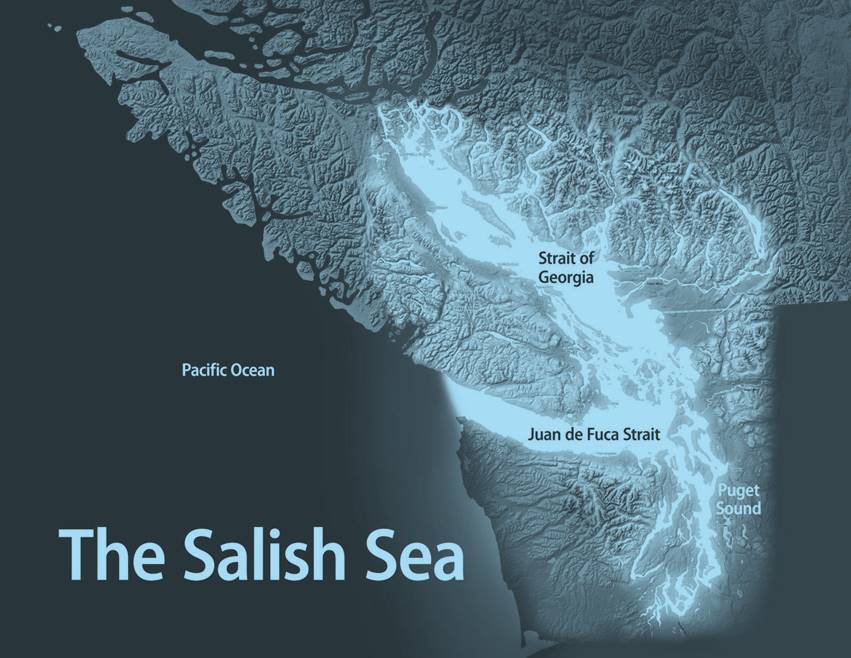Salish Sea Marine Survival Project
The Salish Sea Marine Survival Project represents years of international collaborative research aimed at understanding a key question for Pacific Northwest salmon recovery: what is limiting the survival of juvenile salmon and steelhead in the Salish Sea? Since 2013, over 60 partner organizations and 200 scientists in the U.S. and Canada have contributed to the project, the largest and most important research of its kind in the shared waters of British Columbia and Washington State. This massive effort, coordinated by project leads Long Live the Kings and the Pacific Salmon Foundation, has developed the first comprehensive knowledge base of the environmental factors impacting salmon survival as they enter marine waters.
The findings, summarized in the 2021 Synthesis Report, paint a complex picture of the interrelated factors at play in this critical early stage of the salmon life cycle. The body of evidence points to changes in the food web – both the availability of food for salmon, and the increasing impacts of salmon predators – as the largest contributors to declining marine survival, with habitat loss, pollution, and disease also affecting local populations. As partners continue to pursue further research to refine our understanding of these issues, the final results of the Marine Survival Project are already informing management decisions and providing new strategies to stop the slide toward extinction, recover salmon, and ensure a future for sustainable fisheries.

Sea Change
The Salish Sea ecosystem has changed significantly over the period in which salmon populations have declined. Changes have included increasing water temperatures, increasing acidity, more harmful algae, the loss of forage fish and some marine commercial fishes, changes in marine plants, and more seals and porpoises. Understanding how these changes interact with one another and influence salmon survival was a key goal of the Marine Survival Project.
About the Project
Economic
 Recovering Chinook, coho and steelhead in Puget Sound and the Strait of Georgia will have a tremendous economic up-side for recreational, commercial, and tribal fisheries and related industries such as tourism.
Recovering Chinook, coho and steelhead in Puget Sound and the Strait of Georgia will have a tremendous economic up-side for recreational, commercial, and tribal fisheries and related industries such as tourism.Environmental
 Salmon serve as a key indicator of the condition of the Salish Sea. Addressing what’s causing salmon declines will also influence challenges facing other species (i.e. killer whales) and move us toward a healthier and more productive environment for our region’s people.
Salmon serve as a key indicator of the condition of the Salish Sea. Addressing what’s causing salmon declines will also influence challenges facing other species (i.e. killer whales) and move us toward a healthier and more productive environment for our region’s people.
Cultural
 Salmon are iconic in the Pacific Northwest and have significance across ethnic and cultural lines. Their health preserves tribal and First Nations treaty obligations and sustains a sense of place for the people of the Washington State and British Columbia.
Salmon are iconic in the Pacific Northwest and have significance across ethnic and cultural lines. Their health preserves tribal and First Nations treaty obligations and sustains a sense of place for the people of the Washington State and British Columbia.
Canadian Research Summaries Report
 The Strait of Georgia, part of the Salish Sea, supports approximately 3,000 species of marine life, including all seven species of Pacific salmon. Further, the Strait of Georgia is fundamental to sustaining the diversity of Pacific salmon in southern B.C. Changes in the marine ecosystems of the Strait have been significant, including the loss of forage fishes, changes in marine plants, increases in seal populations, losses of some marine commercial fishes, and recently the introduction of several invasive species.
The Strait of Georgia, part of the Salish Sea, supports approximately 3,000 species of marine life, including all seven species of Pacific salmon. Further, the Strait of Georgia is fundamental to sustaining the diversity of Pacific salmon in southern B.C. Changes in the marine ecosystems of the Strait have been significant, including the loss of forage fishes, changes in marine plants, increases in seal populations, losses of some marine commercial fishes, and recently the introduction of several invasive species.
The Canadian Program Summaries Report details research and outcomes for the Canadian portion of the Salish Sea Marine Survival Project.
Research and Findings
The Marine Survival Project examined 21 hypotheses about the most likely factors influencing juvenile salmon survival in the Salish Sea. The evidence from more than 90 individual studies supports the conclusion that many different factors are important in marine survival, and that no single change is driving the decline. Complex interrelationships across the ecosystem are contributing to more challenging conditions overall. The Synthesis Committee, made up of the lead U.S. and Canadian scientists, reviewed all the findings to produce the final Synthesis Report and summary documents below. The Synthesis Report identified two overarching phenomena behind declining Salish Sea marine survival:
- Changes in food supply. Young salmon, especially Chinook and Coho, need more and larger prey as they grow during their early marine period. Shifting environmental conditions, including weather, nutrients, and temperature, appear to be driving shifts in both phytoplankton and zooplankton at the base of the food web. Climate change is a likely underlying factor behind these changes, but the complexity of these dynamics is still not fully understood, and is a crucial area for further research. At the same time, populations of forage fish, including herring and eulachon, have also declined in many parts of the Salish Sea, limiting another important food source for salmon.
- Increase in predators. Thanks to successful protections for marine mammals introduced on both sides of the border in the 1970s, harbor seal populations have exploded around the Salish Sea. While salmon and steelhead are a small component of the overall seal diet, the sheer number of seals means that even that small portion of their diet represents a major portion of juvenile salmon mortality – between 5 and 60 percent. Human-made changes in the environment contribute to predation “hot spots,” such as log booms or migration barriers like Puget Sound’s Hood Canal Bridge, where seals have easy access to large numbers of fish. Reduced availability of forage fish, lack of complexity in nearshore habitats, and the consolidated timing of Chinook hatchery releases may also affect the number of salmon consumed by seals in a given year or location.
Evidence also indicates that local factors contribute significantly to salmon health and survival in specific populations:
- Habitat degradation, especially in crucial estuary and nearshore marine habitats for juvenile Chinook
- Toxic contaminants near urban areas and hotspots of infectious agents in the Strait of Georgia
- Differences in behavior and life histories within and among salmonid species interact with all the other factors above.
Browse all publications, reports, and multimedia from project studies here.
